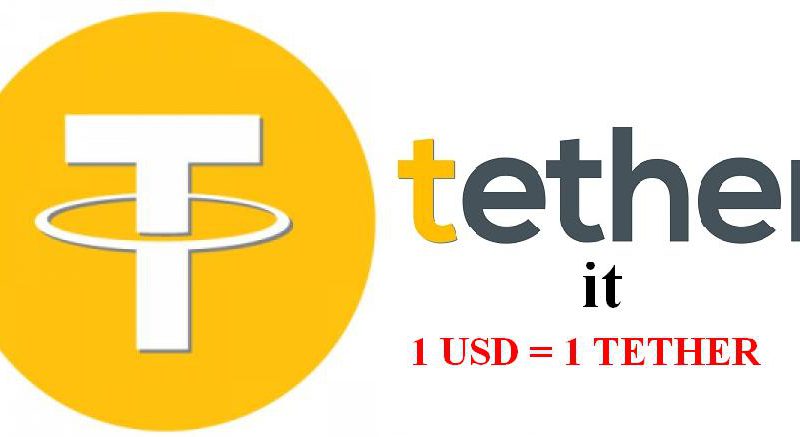Tether Crypto: How to use it and Advantages
Tether, which is currently in beta, was initially known as Realcoin but re-branded in 2014. The intention of the coin is to help users to easily convert real-world currencies and money into crypto coins or digital money, thus making it possible to integrate fiat systems with other digital services in an unlimited manner.
How to use it
With Tether digital-to-fiat currency, you can easily trade crypto at Bitfinex, Kraken, Shapeshift, GoCoin, and other exchange markets.
What it means is that you can convert real-world US Dollars (USD), Euros (EUR), and soon Japanese Yen (JPY), to their equivalent digital tokens or crypto Tether USD, Tether EUR, and Tether JPY and then use them in any digital platform that allows crypto and supported or supports Tether.
However, unlike Bitcoin and other cryptos, the exchange rate is stable -- always at 1:1 for all fiat currencies that it supports, which is a good thing regardless of whether you want to convert your bank real-world money into crypto or otherwise since Tether tokens can also be redeemed for cash.
At the moment, the conversion rate of Tether (USDT) is 1:1 for USD, Euro, and JPY.
Tether allows a variety of companies to do exchanges, run wallets, run payment processors, accomplish financial services and run ATMs to convert fiat money and use it on the blockchain as wished, although there are some restrictions for some countries; we should say that.
Each tethers is backed 100 percent by actual assets (a dollar /JPTY or Euro for each Tether) in the company's reserve account with two banks in Asia that are cryptocurrency friendly.
It offers low fees and no commissions. Sending Tether (Tether.to as they call it) to Tether wallets is always free. The company offers decentralized exchange; browser based, open source, wallet encryption; Bitcoin-based transparency, accountability, multiparty security, and reporting functions.
Advantages
Tether is more of a service that allows users to use fiat currencies like electronic currencies than is a crypto coin.
Another benefit is that Tether coins exist on the Bitcoin blockchain, which is a bit more developed and tested, instead of new platforms trying their luck.
The fact that it is tied to real-world currencies means it is not volatile or is shielded against volatility. Users can also add and withdraw USD with the use of Bitcoin blockchain with the highest security and the transactions are fast.
As a benefit to a young service of its kind, the project is already backed by Poloniex, Ambisafe, Space Shift and other international partners, which is a bit promising for those venturing into crypto investing and trading. There is some meat!
You can also rely on their great customer support service to get things done, although it is in English only.
There is also the fact that it has low fees and no fees at all for those sending coins to other Tether.to wallets.
The company considers itself transparent so you can see how much reserve the company holds and how many tokens are in circulation here. It also means that Tether might not face market risks such as Black Swan events and liquidity crunches.
The company also follows KYC and AML guidelines.
The Omni Layer also, Like Ethereum, allows building of a stack of decentralized applications such that layers on top have more abstraction away from the underlying blockchains, and this means you can end up with a customer-facing business that functions like any other business out there in terms of following KYC and AML guidelines, for instance.
One drawback is that you have to be verified and follow KYC and AML guidelines to open an account, which may not augur well with those needing more privacy. There is another drawback we will meet down somewhere in this discussion.
Proof of Reserve
For all of you who have heard Proof of Reserve, it is where each Tether in circulation is fully backed by an equal amount of fiat currency.
Accessing the wallet
The official wallet can be found at the company's web portal tether.to. You can also download a mobile app to store USDT, which allows transferring of funds back to an insured bank account or to other exchanges for use.
You can also try out the Omni Layer enabled wallet, which offers a number of options.
If you are using a fully-validating desktop wallet, you need to store the entire blockchain, which is a downside.
You can also use Holy Transaction, which allows you to exchange between currencies in a wallet in a similar way to Exodus wallet, but not going through ShapeShift.
There is also an Android Tether Wallet.
First, they ignore you, then they laugh at you, then they fight you.
You can read more on the tokens liquidity, emission and other Tether banking issues here. For instance, it underwent a cut to wire transfer services from Taiwanese banking partners.


